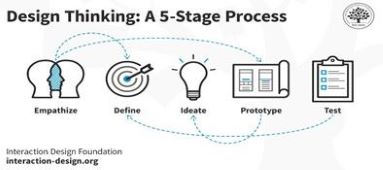Eco Stewardship Programme

Eco Heroes Programme
The Eco Heroes Programme is a STEM programme for all Secondary 2 students.
In the Eco Heroes Programme, we aim to:
- educate students by sharing some of the issues pertaining to sustainability, such as sustainable waste management, recycling, water & energy conservation and food wastage.
- develop thinking skills by connecting knowledge across subject disciplines in the context of sustainability.
- develop analytical skills using data analytics tools to analyse authentic data and to address sustainability issues using design thinking protocol.

Key Sustainability Issues
Students will acquaint themselves with the key issues of sustainability of our earth and her ecosystems through the following 5 themes that are pertinent to Singapore:
| Theme | Sustainable Development Goals (SDGs) | Brief Description |
|---|---|---|
| Theme 1: Waste Management | Goal 12: Responsible Consumption & Production | ● In 2022, Singapore generated about 7.4 million tonnes of waste. The amount of waste generated is expected to increase with population and economic growth. ● Semakau Landfill is projected to run out of space by 2035 and Singapore’s household recycling rate in 2022 fell to 12 per cent – the lowest in more than a decade. |
| Theme 2: Food Security | Goal 2: Zero Hunger | ● Singapore imports over 90% of its food supply and is vulnerable to global food supply shocks. ● External environment is increasingly uncertain and volatile due to impacts of climate change. ● Increase in food consumption due to Singapore’s growing population and middle class will add additional stress to our food supply. |
| Theme 3: Water Constraints | Goal 6: Clean Water & Sanitation | ● Singapore’s water demand is set to double by 2060 – a year before water deal with Malaysia expires. ● Conventional water sources (local catchments and imported water) are dependent on rainfall. Dry weather can threaten the reliability of our water supply. |
| Theme 4: Energy Sources | Goal 7: Affordable & Clean Energy | ● Singapore has pledged a long-term low emissions development strategy (LEDS) with a clear goal to achieve net zero emissions by 2050, and our updated 2030 NDC to reduce our emissions to 60 million tonnes of carbon dioxide equivalent in 2030. ● In Singapore, we have limited renewable energy options, with most of our electricity generated using natural gas. Singapore does not have hydro resources, our wind speeds and mean tidal range are low, and geothermal energy is not economically viable. |
| Theme 5: Biodiversity Protection | Goal 15: Life on Land | ● Risk of compromising biodiversity protection due to continued development. ● Fragmentation of habitats, where natural areas are bisected by roads or other developments. ● Edges of habitats are more susceptible to fragmentation due to air, noise and light pollution from developed areas. |
Design Thinking Protocol
 Students use Design Thinking Protocol to research and propose an intervention on one of the 5 sustainability themes so that they can all be Eco Heroes!
Students use Design Thinking Protocol to research and propose an intervention on one of the 5 sustainability themes so that they can all be Eco Heroes!
Students will learn:
- how to empathise with the sustainability problem by designing a survey to find out how people think about the issue
- how to define the problem based on the reasons for people’s action / inaction
- some ideas generation tools to help them ideate and brainstorm ideas to address the sustainability problems
Students will then prototype and test their proposals.
Data Literacy and Infographics
Students will embark on a journey to be data literate using authentic data from their research. To be data literate means the ability to “read” and “write” data effectively, a future ready skill that is important as we immerse ourselves in the world of Big Data every day.
Students will learn about
- Data Identification. Following from the Ideate stage of the Design Thinking protocol, students identify the data they need to make informed decisions of their intervention
- Data Collection & Maintenance. Students collect data through a variety of means such as surveys, publicly available data from reliable sources (eg: government websites), observations, interview, etc. They learn to systematically record them and archive data that is no longer needed.
- Data Analysis & Usage. Students make sense of data by analysing them using commonly available productivity tools. They explore how the data could be presented in charts, graphs or infographics to tell a story that captures the attention of the audience.



Interdisciplinary Learning
The skills used are also transferable to the different subject areas. Examples include:
- Mathematics – Problems in Real World Context and Statistical Data Analysis
- Humanities – Interpretation and working with sources in Geography and Social Studies
- English Language – Oral, presentation and comprehension skills
- Sciences – Data sources and analysis questions in the different Sciences

